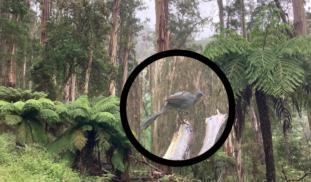Please wait...
About This Project
Lyrebirds are some of the world’s best vocal mimics and can accurately copy dozens of species in their Australian rainforest homes. In this project, we will use sound recordings from the forest to understand just how accurate lyrebird mimicry is. Our goal is to develop machine learning methods for distinguishing lyrebirds from the species they imitate. These methods are foundational for understanding how expert vocal mimics interact with other species in their shared acoustic space in the wild.





